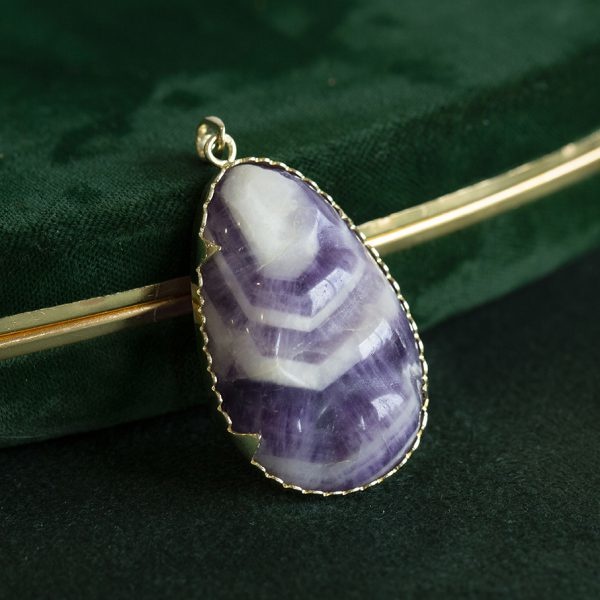Shop since 1973 100% recycled and restoredSame day shipping
Amethyst: the gemstone of kings, saints and activists
Amethyst, the purple variant of the mineral quartz, has been one of the most popular gemstones for amethyst jewelry for centuries. In the past, this purple stone was considered as special as sapphires, emeralds and rubies and therefore amethyst gemstone jewelry was widely worn by kings and bishops. Amethyst is the birthstone of the month of February.

Rare purple stone
Quartz is one of the largest mineral groups in the world and exists in many different colors and appearances. Although quartz is a common mineral, the purple variety is relatively rare. This makes amethyst the most valuable variant of the quartz family. Amethyst occurs in nature in both a clear and semi-transparent variety and is light lilac to deep purple in color. It can basically be found anywhere in the world. Large mines can be found in Canada, America, France, Myanmar, Russia and Sri Lanka, among others.
Very strong and yet easy to sharpen
Amethyst is formed deep in the Earth's crust under high pressure and temperature and grows in distinctive hexagonal crystal shapes. These crystals are so attractive that they are also sought after in their raw form. In addition, amethyst is frequently sharpened to process in jewelry. The mineral is relatively easy for gemstone cutters to facet into unique gemstones in all kinds of different cuts. Because amethyst is easy to sharpen but also very strong, the stone is also used to carve small sculptures. However, this mineral remains most popular for amethyst gemstone jewelry.
The purple, the better
The most precious variety of amethyst is completely transparent without inclusions, has a clear shine and a deep purple color. Lesser varieties have a paler purple color and are partially opaque; sometimes white bands of colorless quartz run through the purple material. Because amethyst is relatively rare, nowadays a lot of amethyst is obtained by heating citrine, the yellow variant of quartz, after which the color changes from yellow to purple.
Popular with the Ancient Greeks and Romans
Amethyst is one of the first gemstones used by man to wear as jewelry. Jewelry with amethyst has already been found in the tombs of the Ancient Egyptians, and the Ancient Greeks and Romans were also known lovers of this purple mineral. Although quartz is found all over the world, amethyst was its rare sister that only occasionally showed up. That only changed in the 19th century, when large amounts of amethyst were discovered in Brazil. Before that, amethyst was so rare that it was as expensive as the much rarer gemstones sapphire, ruby and emerald at the time.
Amethyst gemstone jewelry was also popular and exclusive because the color purple had a special meaning in ancient times. The color purple was considered a color that was only worn by people of royal descent. Julius Caesar, for example, had it legislated that he was the only one allowed to wear purple during his reign. The first Christian rulers also believed that purple was a special color. It is not for nothing that Popes and bishops had their signet rings made of amethyst. Saint Valentine, the founder of Valentine's Day, is known to wear a ring with a carved amethyst in the shape of Cupid on the day he died.
Amethyst as an anti-hangover remedy?
In ancient times, amethyst was not only chosen for its beautiful color and shine. People strongly believed in the mysterious healing properties of the stone. The Roman writer Pliny the Elder wrote that amethyst was known as an anti-drunken stone; the Greek term 'amethystos', from which the mineral gets its name, means 'not drunk'. Also, the Romans believed that wearing an amethyst would protect you from evil spells cast against you by enemies.
Female rights
More recently, the stone took on an extra important meaning for a generation of women. You may be familiar with the 'Suffragettes', a group of women who fought for women's suffrage in the early twentieth century. The colors green, violet and white symbolized the slogan 'Give (green) Women (white) Vote (violet)'. In this period, many jewelery was therefore made with a combination of peridot (green), pearls (white) and amethysts (violet), as a symbol of the struggle for equal rights for women and men.
Today, amethyst is still a much-loved gemstone that gives both silver and gold jewelry a beautiful appearance. Its unique color and beautiful shine makes it a special centerpiece for many jewelry. Discover our collection of vintage amethyst jewelry here .


